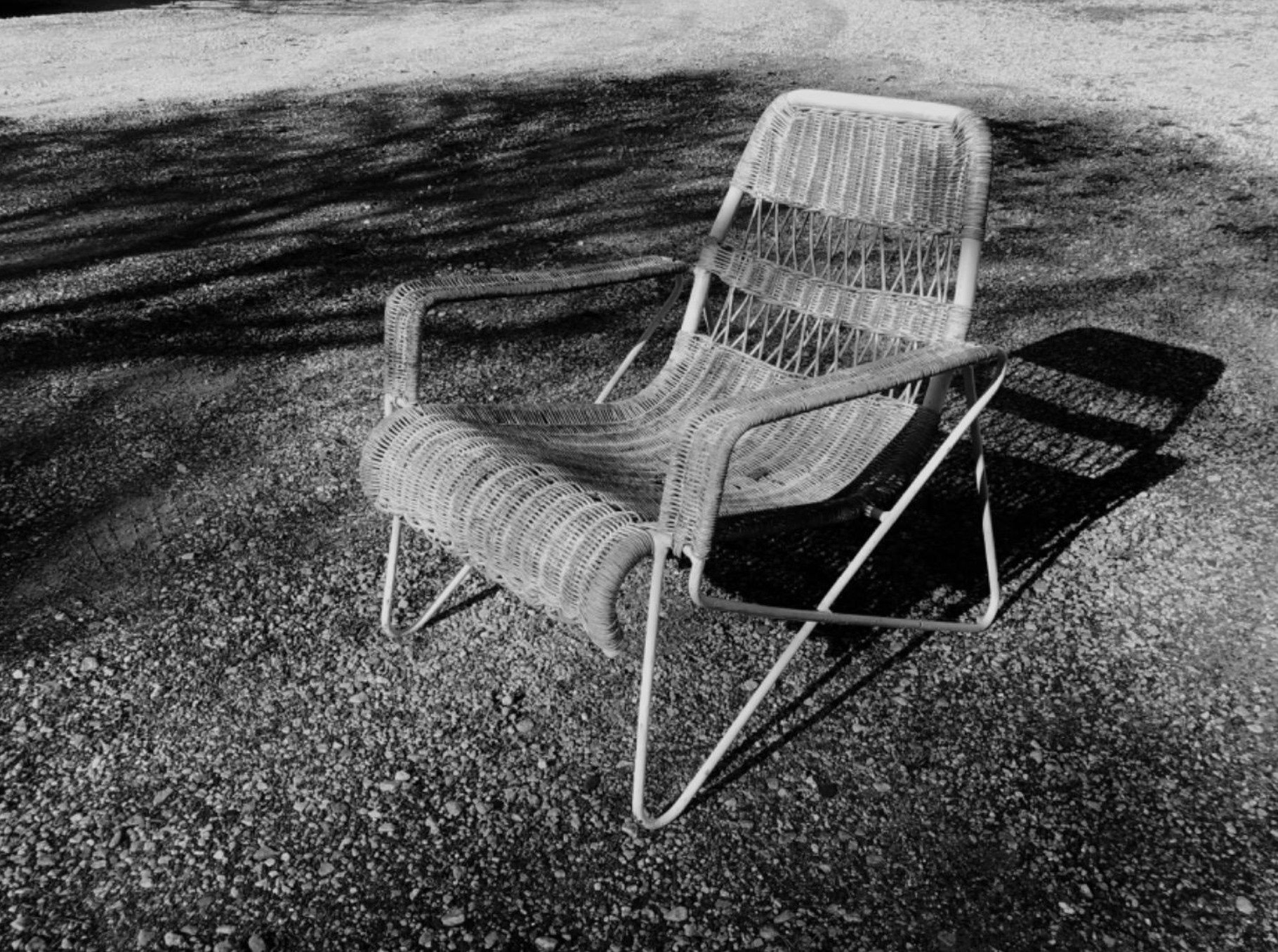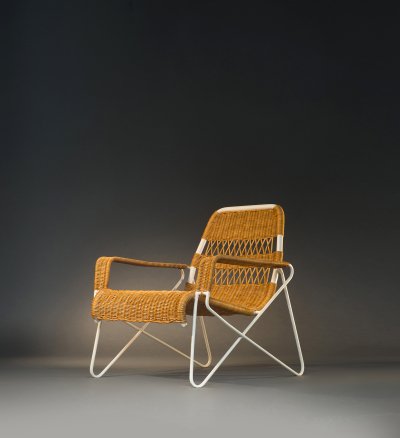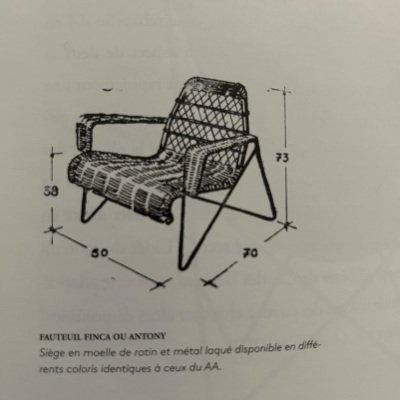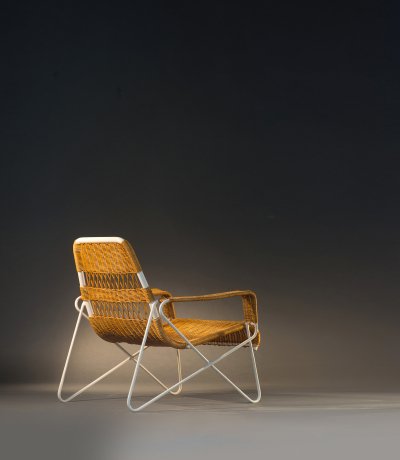Raoul Guys
In Paris of the 1950s, at a time when metal, glass, and concrete heralded a triumphant modernity, Raoul Guys made his voice heard in a different register. Neither a loud theorist nor an academic figure, he chose the quiet yet luminous path of rattan — a humble, warm material that his hands and his vision could raise to the level of art. His furniture, woven from pale fibers and carried by lines of black steel, breathes an airy elegance: bookcases that seem suspended, supple armchairs that catch the light, tables that appear to float in space.
Both publisher and creator, he was a mediator of forms, a collaborator with Airborne and a companion to Mathieu Matégot, whose tapestries he exhibited in his galleries in Paris and Marseille. Yet beyond names and alliances, what remains is this subtle union of craft and modernity: an art of balance where the roughness of steel converses with the pliancy of wicker. His “Antony” chairs, designed for the Parisian student residence at Cité Universitaire, still testify to this precision — functional and sculptural, they speak the language of a poem, brief and exact.
Raoul Guys left behind few biographical traces, but his furniture tells the story in his place. One reads in it a love of simple materials, a taste for lightness, and a refusal of excess that defines the finest creators. Each seat, each shelf, each curve of rattan still carries the memory of this discreet designer, whose elegance continues to inhabit our interiors like a whispered confidence carried through time.






